This is the tombstone of Rev. John G. Burger, located in row 5 of Zion Lutheran Cemetery, Schumm, Van Wert County, Ohio. The marker is inscribed, Rev. John G. Burger, 1815-1847, First Resident Pastor, Zion Lutheran Church.
Johann Georg Burger was born 4 July 1816 in Nördlingen, Bavaria. He passed away 26 March 1847 in Van Wert County at the age of 31 years, 8 months and 25 days. He died of pneumonia and was buried on 27 March.
The Schumm area was settled in 1838. Despite all the problems of pioneer life their faith was very important to the settlers. In 1839 Pastor Friedrich Wynekin, a traveling minister from Fort Wayne, Indiana, traveled to the area and preached to the new settlers. In the early years they worshiped in their cabins. In 1840 the Schumm pioneers area erected a log church.
During this time there was a shortage of Lutheran pastors in this area. It is said that when Pastor Wynekin arrived in Fort Wayne in 1838 the only Lutheran pastor in Indiana had just passed away. Appeals for ministers of the Gospel were sent to Germany over the next few years.
In southern Germany Rev. Johann Konrad Wilhelm Löhe was particularly interested in mission work and the spiritual state of German immigrants in America. He recruited young men to become ministers and sent many pastors to North America and other countries. In 1841 Rev. JKW Löhe trained Johann George Burger as a teacher. Burger was Löhe’s second student. John Burger and fellow student Adam Ernst were two of the first future ministers to be sent to America by Rev. Löhe.
John Burger and Adam Ernst sailed to America together on the ship Philip. They arrived in New York on 26 September 1842. They were both 27 years of age.
John Burger continued his studies at the Theological Seminary in Columbus, Ohio. He was ordained by Dr. Wilhelm Sihler on 18 September 1845 in Cleveland. Dr. Sihler founded Concordia Theological Seminary in Fort Wayne in 1846.
After his ordination Rev. Burger served as the pastor of Zion Lutheran Church, Hancock County, Ohio. On 14 June 1846 he was called to be the pastor of Zion, Schumm. While at Schumm he also ministered to the congregations of St. Thomas Lutheran, Ohio City, and St. Paul Lutheran, Liberty Township, Mercer County.
One of the first things Pastor Burger did at Zion was to write a constitution for the congregation. The congregation adopted the constitution on 18 September 1846 and it was signed by twelve founding members. Included in the constitution was the congregation’s financial support of a proposed new synod.
Rev. Burger played an active role in the formation of a new Lutheran synod in America. He met with other pastors in Cleveland on 13-18 September 1845 to make plans to form a new synod. In July 1846 Pastor Burger was one of sixteen pastors who met at Fort Wayne to complete the preparatory plans. The new synod was to to be organized at Chicago the next year, 1847.
Pastor Burger had planned to go to Chicago in 1847 and report that he and his congregation were ready to join the new synod. But on 26 March 1847 he died of pneumonia at the young age of 31 years.
The German Evangelical Lutheran Church Missouri, Ohio and Other States, now known as the Lutheran Church—Missouri Synod, was formed on 26 April 1847 in Chicago, Illinois. Twelve pastors representing 15 German Lutheran congregations met to form the new church body. I am sure Rev. Burger would have been there to represent Zion if he had been able.
According to a report by Dr. Sihler in Der Lutheraner, Rev. Burger’s last words to his congregation were, “God now has given you a pastor, but He can also take him away again. Only remain firm in the confession of the truth and be agreed among yourselves… I have a desire to depart and be with Christ, yet I would like to abide in the flesh a little longer for your sake, but as God wills.”
Rev. Burger performed 15 baptisms, 2 confirmations, 1 marriage and 5 burials during the nine months he served as Zion’s pastor. He performed the first recorded baptism at Zion, baptizing John Edward Roedel on 28 June 1846. He performed the first recorded marriage when he united Casimir Leikhart and Catharine Haller on 5 November 1846.
Rev. John G. Burger was laid to rest next to John Georg Schumm, the founder of the Schumm community.
Sources:
- Cyclopedia LCMS, Burger, Johann Georg.
- “Hundreth Anniversary of the Zion Evangelical Lutheran Church, Schumm, Ohio, 1846-1946.
- Year: 1842; Microfilm Serial: M237; Microfilm Roll: M237_50; Line: 32; List Number: 826; Ancestry.com. New York Passenger Lists, 1820-1957 [database on-line]. Provo, UT, USA: Ancestry.com Operations, Inc., 2010; accessed 9 Jan 2012.
- Church records of Zion Lutheran Church, Schumm.
- History of Van Wert and Mercer Counties, Ohio (1882; reprint, Mt. Vernon, Indiana: Windmill Publications, Inc, 1991), 423.

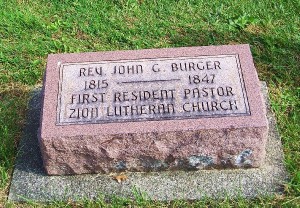
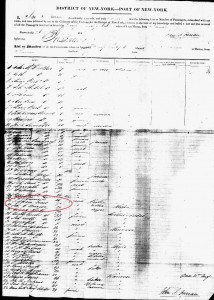

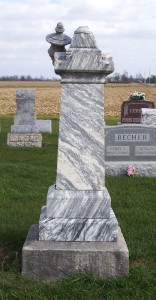

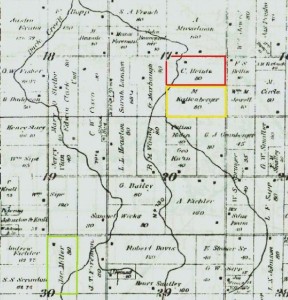
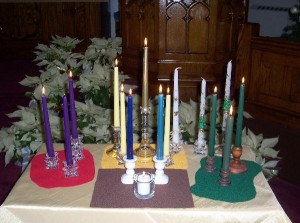
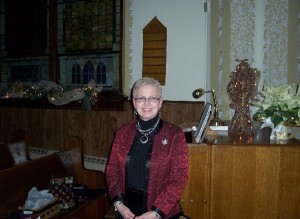
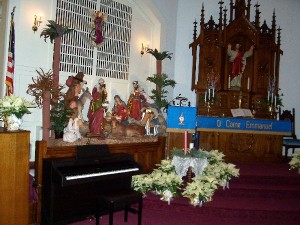


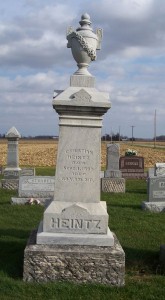
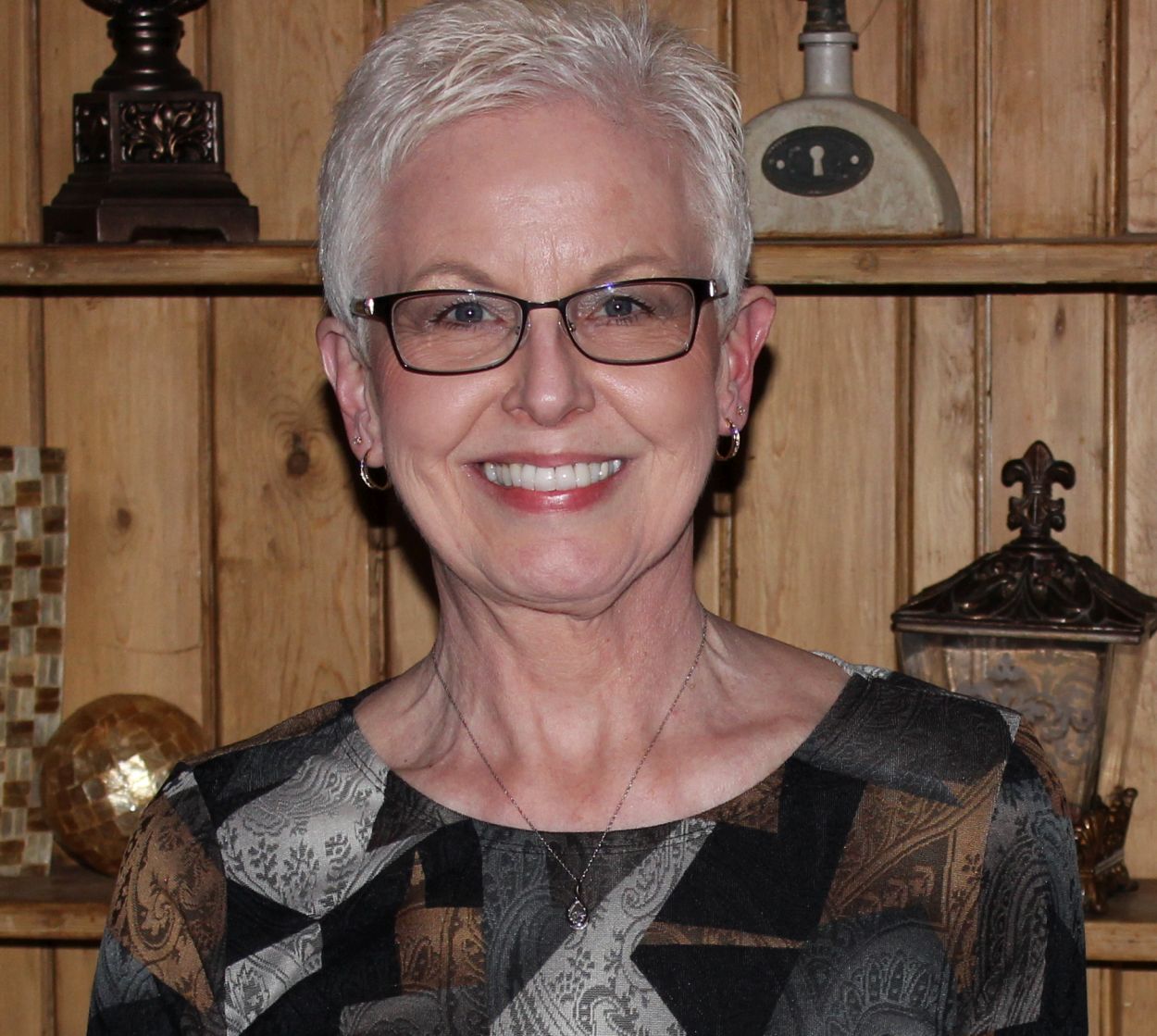



Thank you, Gloria. Great to hear from you and wishing you a nice spring and summer as well.
Thank you Karen. It was great to see them in their younger years. I always find your articles so interesting.…
What a story! I knew Henry Kissinger was in the 84th but have not corresponded with anyone connected to him.…
My father , Raymond Eugene Fairchild was also in the 84th infantry 333rd division Was in the Bulge and afterwards…
Very interesting. Thank you for that information. You are certainly the expert on early local history. We very much enjoyed…